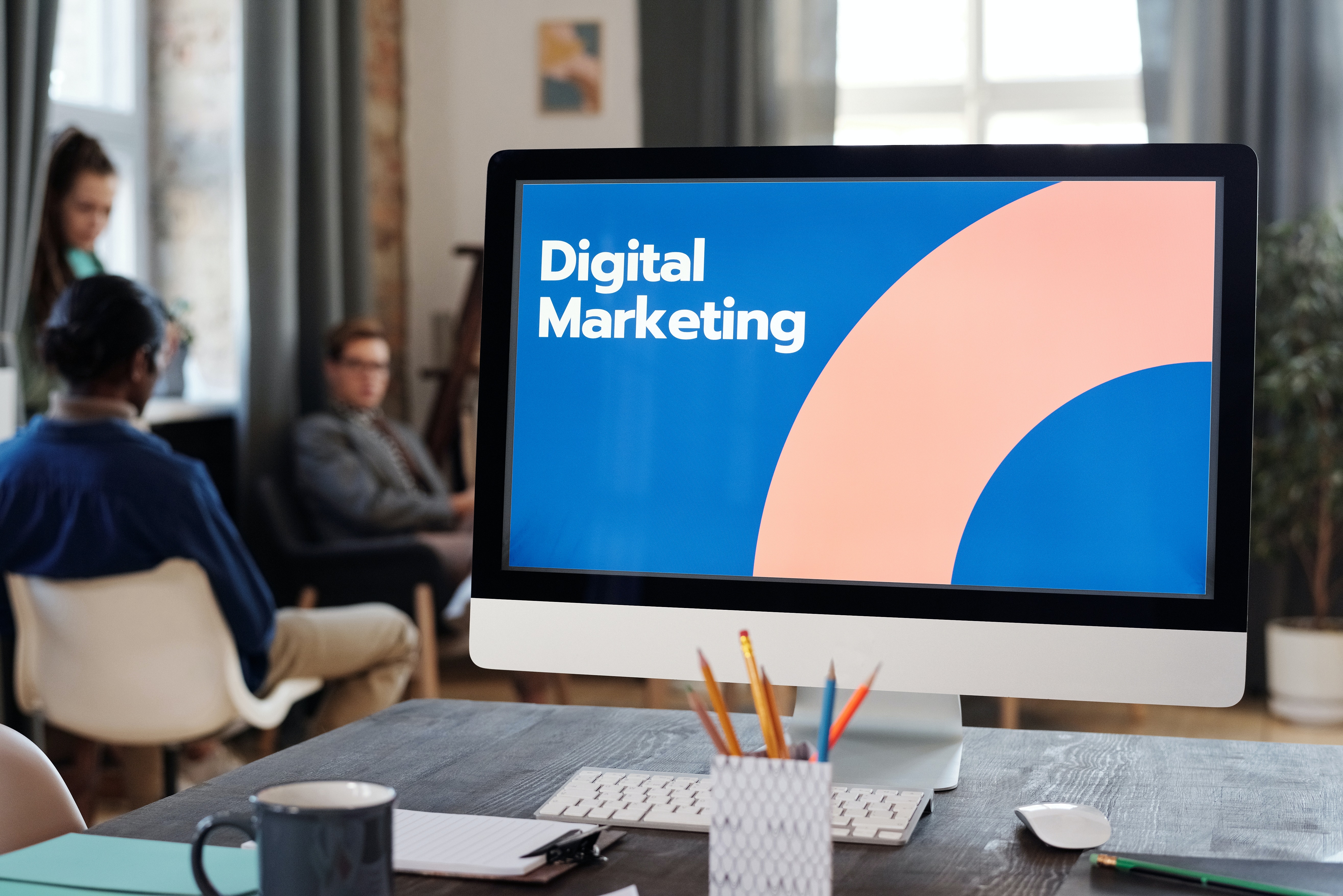Consumers today interact with ads almost everywhere they turn. They see ads on social media and in email marketing campaigns, they interact with out-of-home ads, print media, and digital ads like banner ads, pop-ups, and more. Digital ad channels especially are growing in popularity thanks to the undeniable power of digital media advertising.
After all, there are almost 2.5 billion active users on Facebook and another 1 billion active users on Instagram. It’s no wonder social media advertising reached a projected $8.5 billion in 2021.
But is there a particular approach that is a smarter option for brands looking to connect with their target audience?
Digital advertising may be affordable and easy to track, but brands may ask if there are some digital channels that are better than others to reach consumers—especially if they are looking to build credibility. One available channel for brands hoping to connect with consumers is through news media, both in print and via digital extensions.
This article will take a deep look at the influence print news media and digital news media channels can have on advertising campaigns. By strategically positioning ads with news channels—both print and digital—brands can make a stronger impression and earn trust with their target audiences.
The Lasting Power of Print
There is one channel that seems to be able to cut through the noise of many other media channels: Print.
Gardner Business Media reports that in 2021, brands spent an estimated $30.2 billion on print advertising. By 2025, this figure is estimated to drop to $24.98 billion. With less money spent on print, it could seem that print is getting less attention too.
However, print can play a strong role in multichannel advertising campaigns. AdWeek reported on print’s ability to connect with consumers in a way that many solely-digital campaigns cannot. For instance, the news source reported that direct mail print ads have a lifespan of 17 days. Comparatively, emails have a lifespan of about 1.5 hours and social media ads only last a few minutes.
The publisher also added that consumer recall is better for print media, sharing that 75 percent of participants in one study were able to remember the brand names after viewing print mail pieces. When these same study participants were shown digital ads, only 44 percent were able to recall brand names. Researchers hypothesize that this is because print ads are “less taxing on the brain,” which makes them easier to remember.
Consumers Trust Media Associated with News Sources
Your audience is likely going to be more receptive to print media, but what about advertising from a news source? Will they be more open to connecting with your brand when you opt for a news media channel as compared to other channels?
In November 2021, Forbes reported on just this. It would seem that like print media, advertising via a reliable news source is also more effective compared to similar channels, especially for tailored ads, which deliver great ROI. In fact, one study Forbes shared found that compared to non-news programming, respondents believed ads shared via news content channels were:
- 8 percent more relevant
- 6 percent more valuable
- 4 percent more trustworthy
The business news source also shared that:
“Brands should support quality journalism, recognizing there is a difference between unsafe content and news on trusted websites. Advertisers should identify and deliver media against reliable news sources to drive better effectiveness. The reliability of the source has more of an impact on ad effectiveness than the news content itself.”
When it comes to sharing media and ad campaigns via news and print news channels, credible sources can help amplify the effectiveness of your campaign. It builds credibility, encourages consumer trust, and helps establish brands as the authority in their sector.
Consumer Trust and the Rise of the “Fake News” Era
One concern that brands must face is the spotlight on “fake news,” which Deloitte Insights describes as “false stories that appear to be news, often spread with the intent of influencing readers’ political beliefs or worldview.” Around three-quarters of Americans report that they are worried about fake news. So how does this impact brands looking to share their campaigns through credible channels?
As it turns out, most of the concern centered around fake news surrounds news on social media platforms. In fact, two-thirds of survey respondents shared that they don’t trust news on social media——and 44 percent of news-consuming Americans believe that social media sites could have done more to mitigate the spread of misinformation.
It is important to keep in mind that amidst this spread of fake news, 84 percent of news consumers say that they aim to get their news from reputable sources that review and verify information before publishing.
During this time, brands should put consumer trust first. This isn’t just about news; it’s about advertising as well. Trust-building is critical for retaining customers, and should be placed at the forefront of media campaigns: When and where ads are placed, what they say, and how they make customers feel all matter.
Follow the Studies: Ads Placed in Print News Media Equal Strong Campaign Performance
Just how well does print news perform when compared to other media channels? Studies seem to be showing that print has some lasting power that shouldn’t be ignored.
For example, a March 2021 study performed in Australia determined that ads placed in both newsprint and their digital extensions perform better than social media and programmatic channels. This same study was then performed in the U.S. and researchers found the same results to be true stateside. One shocking discovery however was that print ads specifically had a much larger memory impact on readers.
According to ‘The Benchmark Series: The powerful impact of placement, ThinkNewsBrands’ study, print ads in the newspaper outperformed Facebook ads by up to four times, and programmatic digital by as much as 8.5 times.
What is the reason for the improved performance with print advertisements? This largely-unprompted recall of what we see in print is rooted in our brain’s chemistry and how we process different kinds of information.
One Milward Brown-conducted study used functional magnetic resonance imaging (fMRI) technology as a non-invasive way to track brain activity and analyze the brain. In this study, researchers found that different areas of the brain lit up when people were shown physical ads compared to the areas of the brain that lit up when the same people viewed digital ads. Unlike digital ads, physical ads lit up the right retrosplenial cortex—the part of the brain that’s involved in the processing of emotionally powerful stimuli and memory. Moreover, the act of physically picking up a printed newspaper or print ad activates the cerebellum, which is associated with spatial and emotional processing. Researchers took this to mean that there is evidence of increased emotional processing when it comes to viewing print media.
However, this study found that it’s not the physical aspect alone that drives the news platforms’ performance. Even when comparing digital news environments to programmatic ads, the digital news sites provided the advertiser with 38 percent larger recognition, 33 percent larger prompted recall and an astonishing 136 percent larger unprompted recall advertising found elsewhere on the internet.
Within this study, brands that advertised via news outlets had more short-term ROI success, with 10 percent stronger sales growth compared to brands that advertised via social media.
While an omnichannel approach typically provides advertisers with a stronger ROI over utilizing a single medium, this study shows that newsprint and their digital extensions perform better in comparison to paid social media or other online advertising.
This study should encourage advertisers to consider advertising through print media and news channels when they are media planning.
MBI: Helping You Navigate a Shifting Media Buying Landscape
It’s no surprise that in 2020, ad spending took a major hit. And it’s also no shock that in 2021, the advertising world bounced back. But in 2022, as we emerge into a “new normal” that is more digital, more used to constant disruption, and evolving at a rapid pace, it can be challenging at times to adapt to new media buying trends.
One constant? News media. More than 8 in 10 Americans get their news from digital sources, and approximately 6 in 10 Americans report doing so “frequently,” according to the Pew Research Center. What better way to reach consumers and build credibility than with campaigns that use news media channels to do so?
Each media type and channel meets a different audience where they are—and print and digital news is an important channel for connecting with a specific set of consumers and buyer personas. What’s more, it can help set your brand apart.
So, when is choosing news media the right option for you? Are you looking to add authority and credibility to your brand name? Are you perhaps hoping to improve brand recognition or consumer recall? Selecting a news media channel may be a very appealing venue for your organization.
MBI has a dedicated print planning and buying staff working daily with hyper-local and national publications. Our team can assist with retail, direct response, and awareness campaigns utilizing bespoke industry-leading planning and pricing.
For questions, considerations or to learn more about the benefits of Print Media, contact us today!

